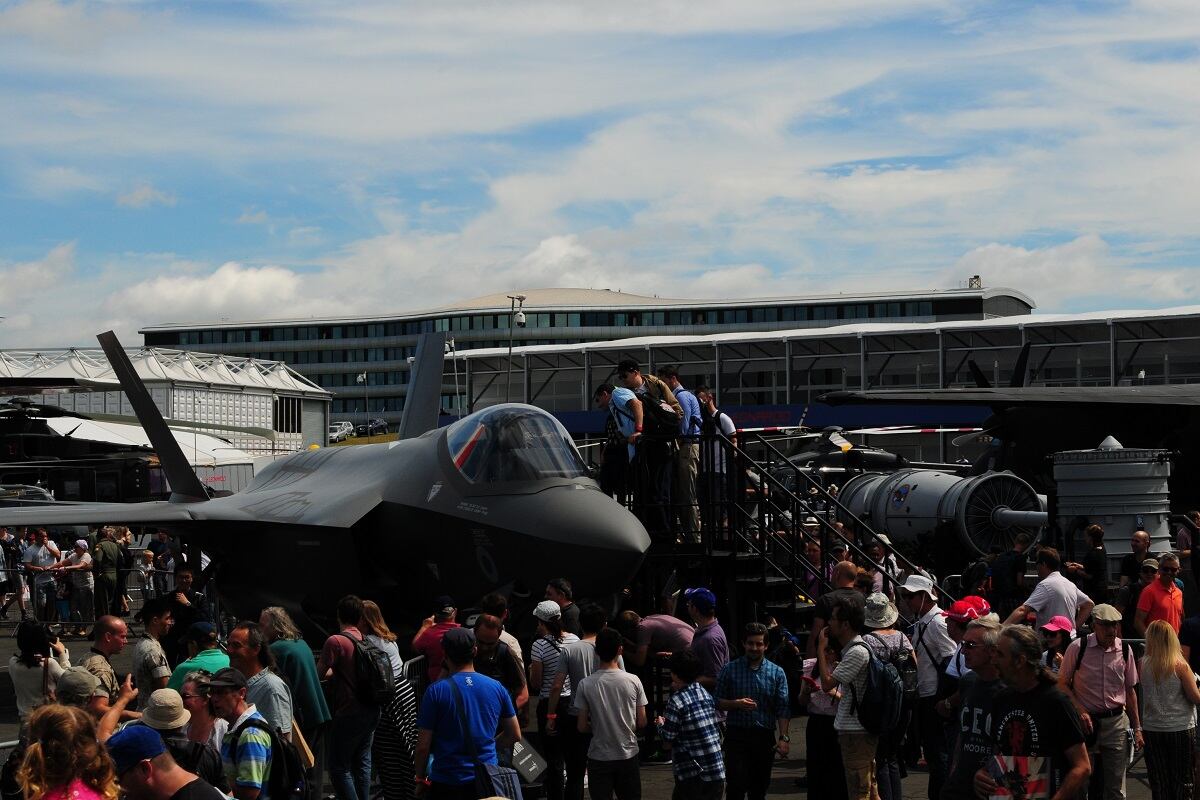WASHINGTON and LIÈGE, Belgium — Belgium appears poised to select Lockheed Martin’s F-35 over the Eurofighter Typhoon as its next-generation fighter jet, with government sources on Oct. 22 telling national news outlet Belga that an F-35 victory has already been decided.
The Belgian government is expected to formally announce its decision before Oct. 29, Reuters reported on Monday.
A Lockheed Martin spokesman said he could not confirm whether Belgium had communicated its choice to the firm, but said the company remains confident in its offering.
“The F-35 offers transformational capability for the Belgian Air Force and, if selected, will align them with a global coalition operating the world’s most advanced aircraft,” Mike Friedman said in an emailed statement. “The F-35 program is built on strong international partnerships, and our proposal includes significant industrial opportunities for Belgian companies to contribute to the global F-35 enterprise.”
The F-35 was widely considered the favorite in the competition, which included the Eurofighter — a partnership among the United Kingdom, Italy, Spain and Germany. This summer, Belgium announced that it would also consider two options in addition to the F-35 and Typhoon: France’s Dassault Rafale or upgrading its existing F-16 fleet instead of purchasing new aircraft.
U.S. aerospace behemoth Boeing and Sweden’s Saab pulled out of the competition last year, with Boeing claiming that Belgium’s requirements favored the F-35 and Sweden stating that it was not able to provide the operational support needed by the Belgian Air Component.
A win by the F-35 would further solidify the joint strike fighter’s dominance among U.S. allies in Europe and deal a heavy blow to Franco-German ambitions for a prominent role in building Europe's next-generation defense capabilities. Both Rafale and Eurofighter had pitched extensive industrial packages to Belgium in the hopes of bolstering their offers.
RELATED

Analysts had said that Belgium’s decision could be a bellwether for future European fighter jet competitions.
U.S. industry sources told Defense News this summer that they believed that President Donald Trump’s rhetoric on NATO allies' defense spending and tariffs on steel and aluminum may have led Belgium to take a closer look at the European offers. Meanwhile, European defense officials and experts repeatedly made the case that Belgium should pick a European plane.
For Brussels, the capital of Europe, to choose the U.S. plane would amount to nothing less than an act of “betrayal,” the French business journal La Tribune headlined on Monday.
Two practical considerations were seen as playing heavily into the Belgian government's inclination toward the joint strike fighter: For one, the neighboring Netherlands already is an F-35 customer. The two countries agreed some years ago to pool their resources in policing their common airspace, and having only one aircraft type presumably would be good for interoperability.
In addition, Belgium for decades has had an agreement with NATO that requires its planes to be capable of carrying U.S. nuclear weapons into a hypothetical atomic war. Belgium, like neighbor Germany, stores a few warheads within its borders for that purpose.
Certifying a European-made aircraft, like the Airbus Eurofighter, for the nuclear mission after the F-16 is politically tricky and – some say – perhaps even undoable given the current state of trans-Atlantic affairs. In that line of thinking, a nuclear-capable F-35 could represent the most trouble-free option for Belgium.
The Belgian decision is sure to be watched closely by Germany. Berlin is in the market to replace its Tornado aircraft, looking for roughly 90 new planes. While officials have said they prefer the Eurofighter, uncertainty surrounding the nuclear-weapons certification of the future fleet remains something of an elephant in the room.
Belgium intends to buy 34 new fighters to replace its aging inventory of F-16s, which number about 54 jets — although that number may be even fewer after an embarrassing incident earlier this month, where a mechanic accidentally opened fire while doing repair work and and blew up a neighboring F-16.
In January, the U.S. State Department pre-emptively approved a $6.53 billion F-35 sale to Belgium that would include 34 F-35A conventional takeoff and landing variants, 38 F-135 engines manufactured by Pratt & Whitney, and a slew of other equipment to enable operations, training and logistics. That estimate is expected to come down as Lockheed and the government hammer out a final contract.
Valerie Insinna is Defense News' air warfare reporter. She previously worked the Navy/congressional beats for Defense Daily, which followed almost three years as a staff writer for National Defense Magazine. Prior to that, she worked as an editorial assistant for the Tokyo Shimbun’s Washington bureau.
Sebastian Sprenger is associate editor for Europe at Defense News, reporting on the state of the defense market in the region, and on U.S.-Europe cooperation and multi-national investments in defense and global security. Previously he served as managing editor for Defense News. He is based in Cologne, Germany.







